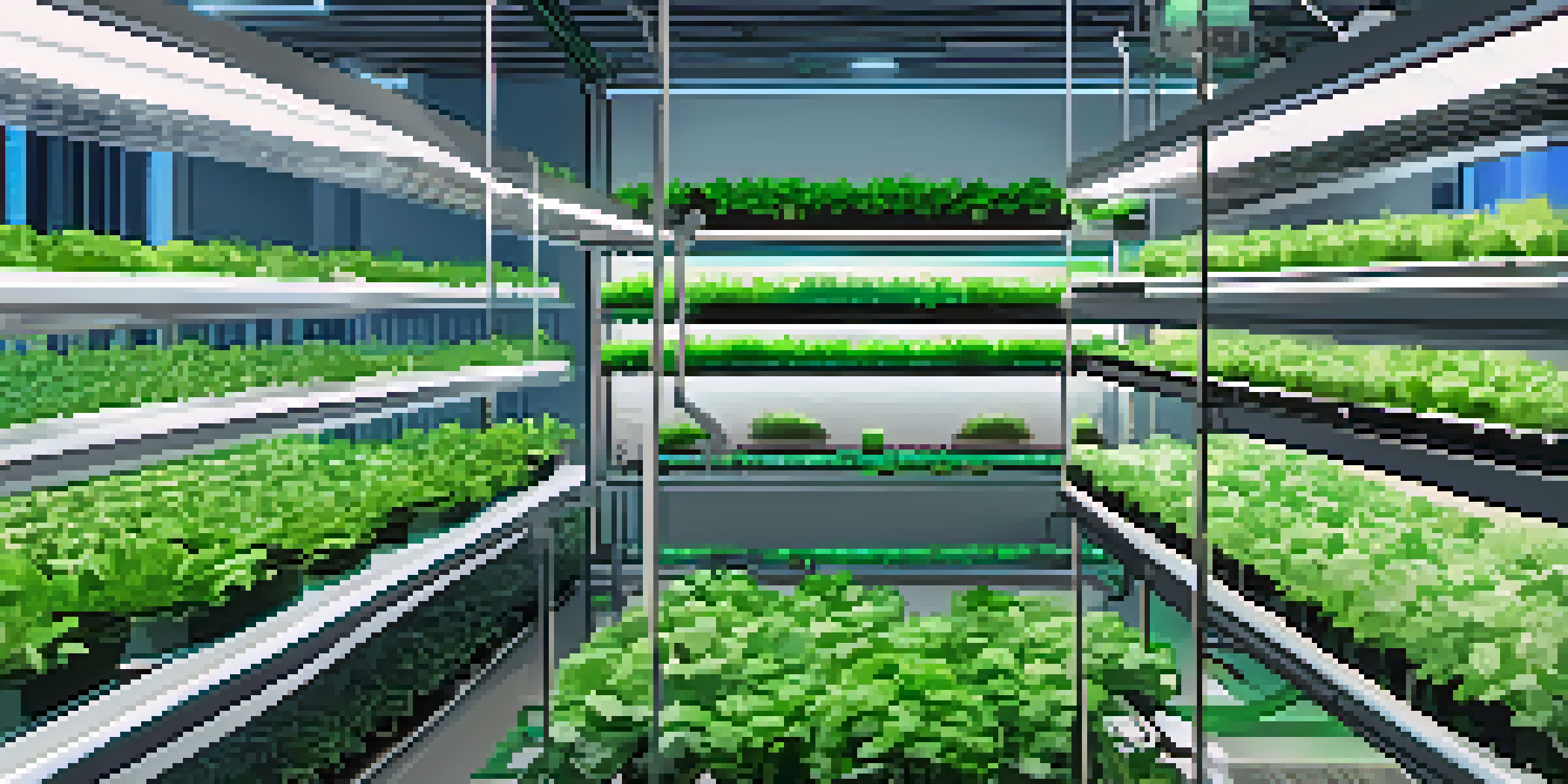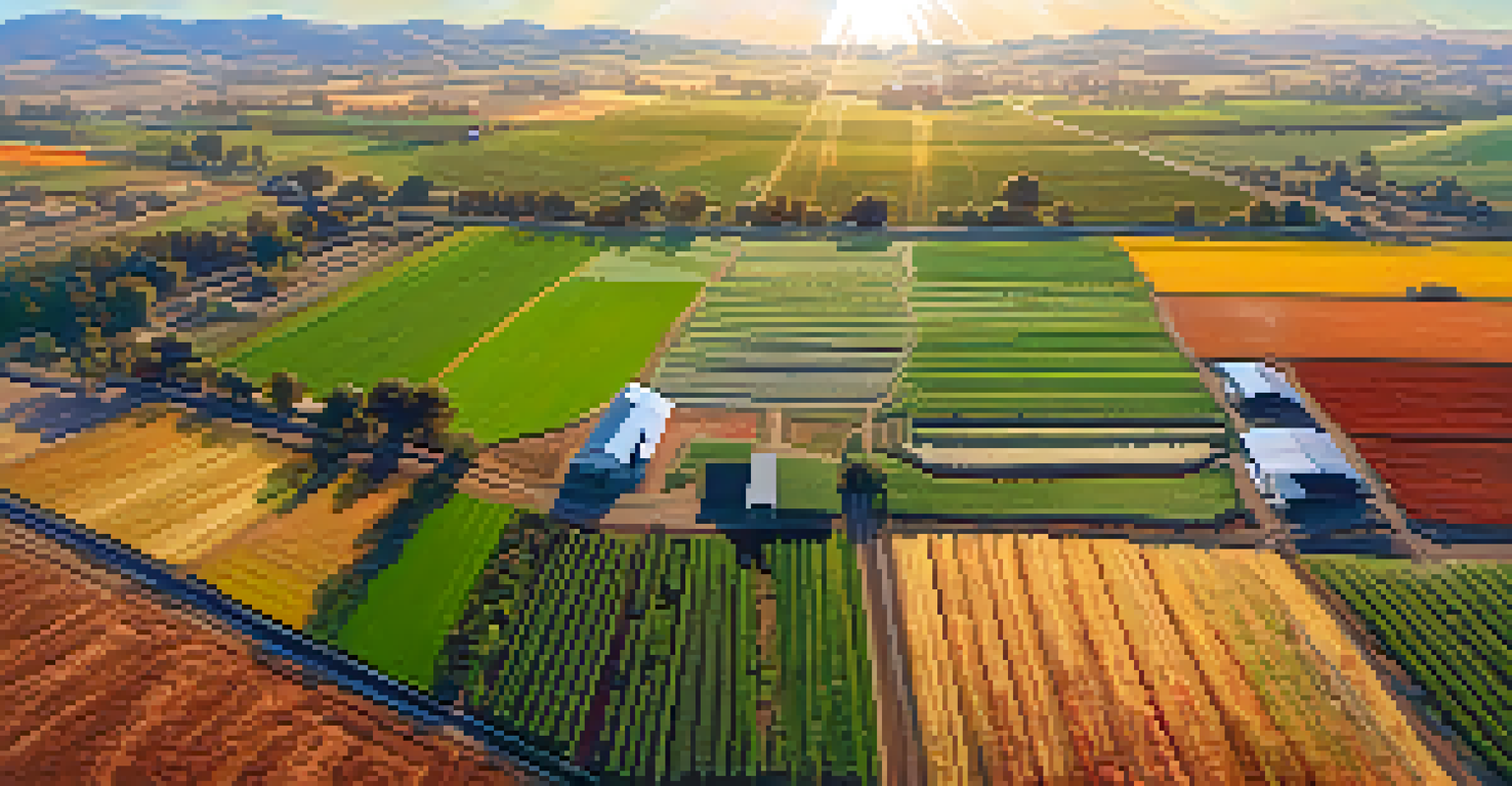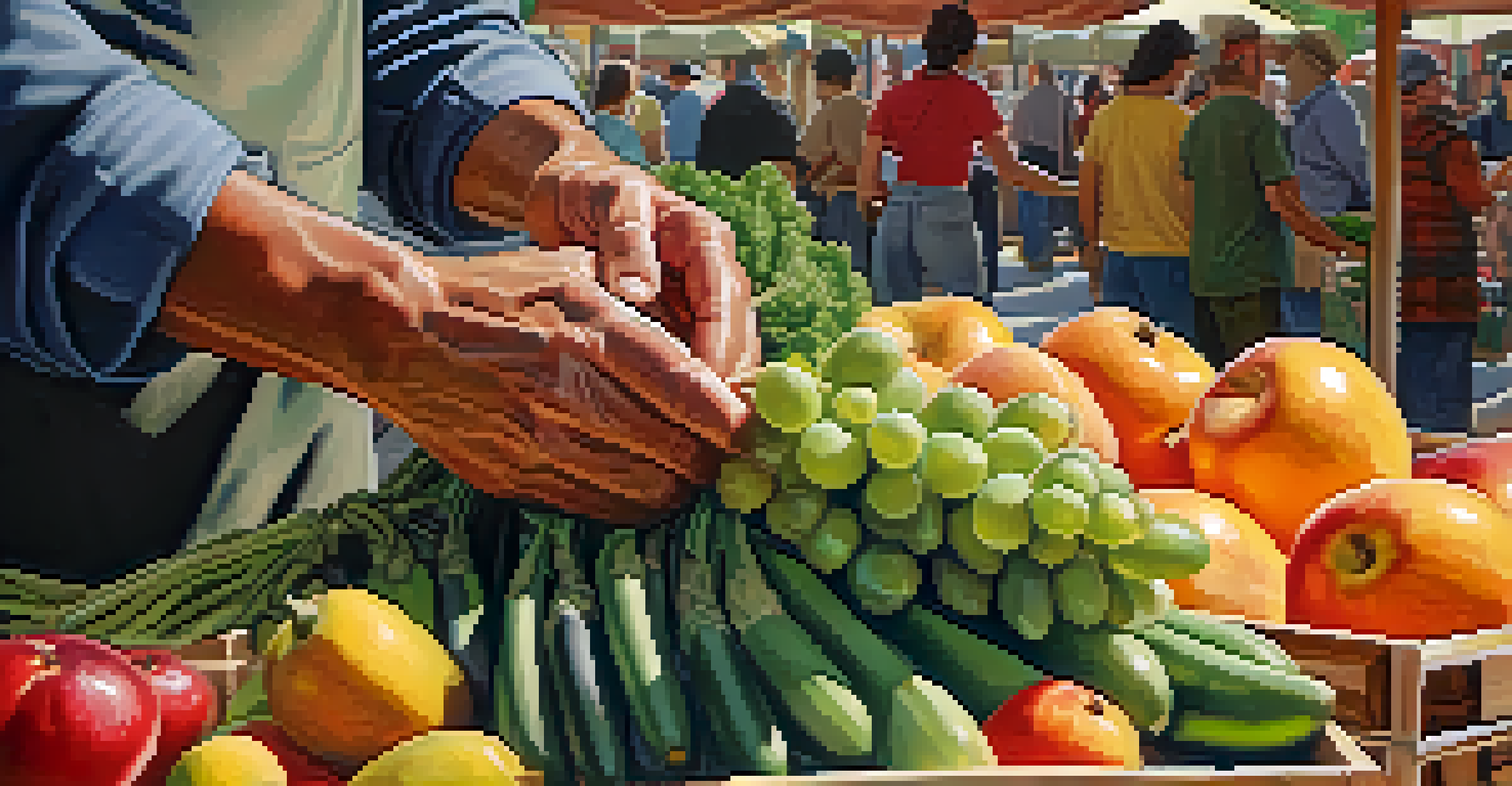The Future of Agriculture in California: Innovations Ahead

The Role of Technology in Modern Farming Practices
Technology is revolutionizing the way farmers operate, making processes more efficient and sustainable. With the advent of precision agriculture, farmers can monitor soil health, crop conditions, and weather patterns in real time. This data-driven approach allows for more informed decision-making, reducing waste and maximizing yields.
The future of farming is not about the farmer alone, but rather the collaboration of technology, science, and community effort.
Drones and satellite imagery are now commonplace on farms, providing aerial views that help identify problem areas before they become major issues. By integrating these technologies, farmers can apply fertilizers and pesticides more accurately, minimizing environmental impact. This shift not only benefits the crops but also promotes a healthier ecosystem.
Furthermore, automation in farming equipment is changing the landscape entirely. Robotic systems can plant, water, and harvest crops with minimal human intervention, alleviating labor shortages and enhancing productivity. As these technologies continue to evolve, the future of farming looks increasingly high-tech and efficient.
Sustainable Practices for a Greener Tomorrow
Sustainability is at the forefront of California's agricultural innovations. With climate change posing significant challenges, farmers are adopting practices that reduce their carbon footprint and conserve resources. Techniques such as crop rotation, cover cropping, and integrated pest management are gaining traction, promoting biodiversity and soil health.

Water conservation is another critical focus, especially in a state prone to droughts. Innovations like drip irrigation and rainwater harvesting systems are helping farmers use water more efficiently. By leveraging these technologies, farmers can maintain productivity while preserving this vital resource for future generations.
Tech Transforms Modern Farming
Farmers are leveraging technology like drones and automation to enhance efficiency, sustainability, and crop yields.
Additionally, many Californian farms are transitioning to organic practices, which not only benefit the environment but also cater to the growing consumer demand for organic produce. This shift supports local ecosystems and contributes to healthier food options, demonstrating that sustainability and profitability can go hand in hand.
The Impact of Climate Change on Agriculture
California's agriculture is feeling the heat—literally. Rising temperatures and unpredictable weather patterns are challenging traditional farming methods. Crops that once thrived in specific conditions now face stress, prompting farmers to rethink their strategies.
Sustainability is not a choice, it’s a necessity for the future of agriculture and the health of our planet.
To combat these changes, agricultural research is crucial. Scientists are developing climate-resilient crop varieties that can withstand extreme weather, ensuring food security despite the challenges. These innovations represent a proactive approach to safeguarding California's agricultural future.
Moreover, farmers are increasingly turning to agroecology, which emphasizes ecological principles in farming. By working with nature rather than against it, they can create more resilient systems that can adapt to changing climate conditions. This holistic approach not only supports agriculture but also enhances the overall health of the environment.
Vertical Farming: A Solution for Urban Agriculture
As urban populations grow, the need for innovative agricultural solutions has never been more pressing. Vertical farming emerges as a promising answer, allowing crops to be grown in stacked layers within controlled environments. This method significantly reduces land use and can be implemented in urban centers, bringing fresh produce closer to consumers.
Utilizing hydroponics or aeroponics, vertical farms can produce food year-round, regardless of outdoor weather conditions. This not only increases food security but also cuts down on transportation emissions, as food doesn't have to travel long distances to reach the market. It's a win-win for urban sustainability.
Sustainability Drives Agriculture
Innovative practices such as organic farming and water conservation are helping California farmers reduce their environmental impact.
Additionally, vertical farming often employs renewable energy sources, making it an environmentally friendly option. The integration of smart technology ensures optimal growing conditions, resulting in higher yields and better-quality crops. As cities continue to expand, vertical farming could redefine urban agriculture.
Biotechnology: Enhancing Crop Resilience and Nutrition
Biotechnology is playing a transformative role in enhancing agricultural productivity in California. By genetically modifying crops, scientists can improve resistance to pests, diseases, and environmental stresses. This means farmers can produce more food with fewer resources, addressing the growing demand for sustainable practices.
Moreover, biotechnology can also enhance the nutritional value of crops. For instance, biofortified crops are being developed to contain higher levels of essential vitamins and minerals, which can significantly impact public health. This approach not only supports farmers but also contributes to healthier communities.
While biotechnology raises questions and concerns, regulations and transparency are key to ensuring safety and consumer confidence. As research continues, the potential for biotechnology to contribute to a sustainable agricultural future is promising, paving the way for innovations that benefit both farmers and consumers.
The Rise of Local and Organic Food Movements
In recent years, there has been a notable shift towards local and organic food movements in California. Consumers are increasingly seeking fresh, locally sourced produce, leading to a boom in farmers' markets and community-supported agriculture (CSA) programs. This trend supports local economies and connects consumers directly with food producers.
Organic farming practices not only cater to health-conscious consumers but also promote sustainable agricultural methods. By avoiding synthetic pesticides and fertilizers, organic farms contribute to soil health and biodiversity. This growing demand for organic products is encouraging more farmers to adopt these practices, creating a ripple effect throughout the industry.
Local Movements Reshape Food Systems
The rise of local and organic food movements fosters community connections and supports sustainable agricultural practices.
Furthermore, the emphasis on transparency in food sourcing is fostering consumer trust. People want to know where their food comes from and how it’s produced, driving the need for farmers to engage with their communities. This strong connection between producers and consumers is redefining the agricultural landscape in California.
Collaborative Research and Innovation Networks
Collaboration is key to driving innovation in California's agriculture sector. Universities, research institutions, and private companies are joining forces to develop cutting-edge solutions to challenges faced by farmers. These partnerships foster a culture of innovation, leading to breakthroughs that can be applied on the ground.
For example, initiatives like the California State University Agricultural Research Institute bring together experts in various fields to address pressing agricultural issues. By combining resources and knowledge, they can tackle challenges more effectively and develop sustainable practices that benefit the entire industry.

Moreover, farmer-led research is becoming increasingly prominent. By involving farmers in the innovation process, solutions are more likely to be practical and effective. This grassroots approach ensures that the needs of those on the front lines of agriculture are heard and addressed, paving the way for a more resilient agricultural future.